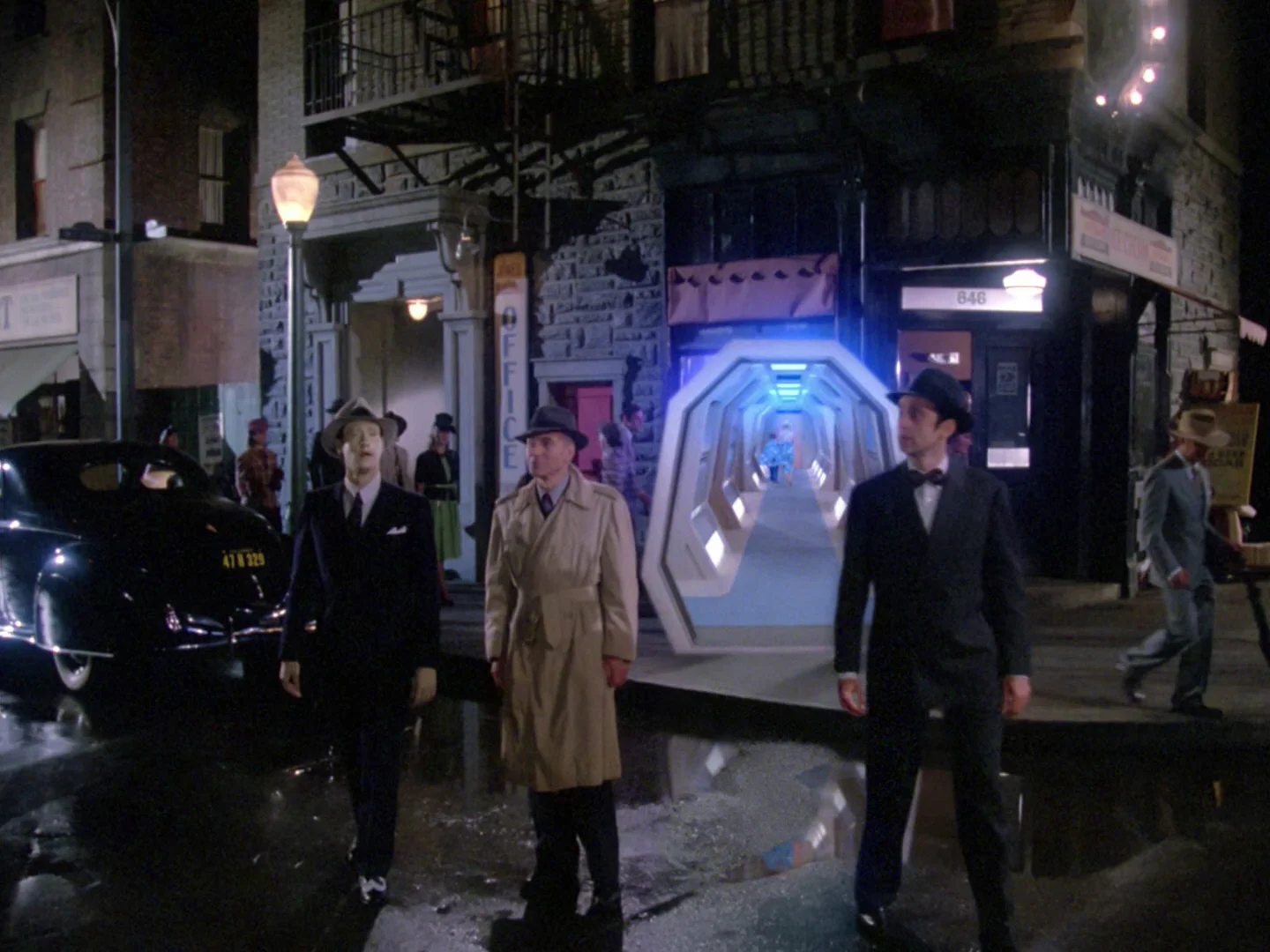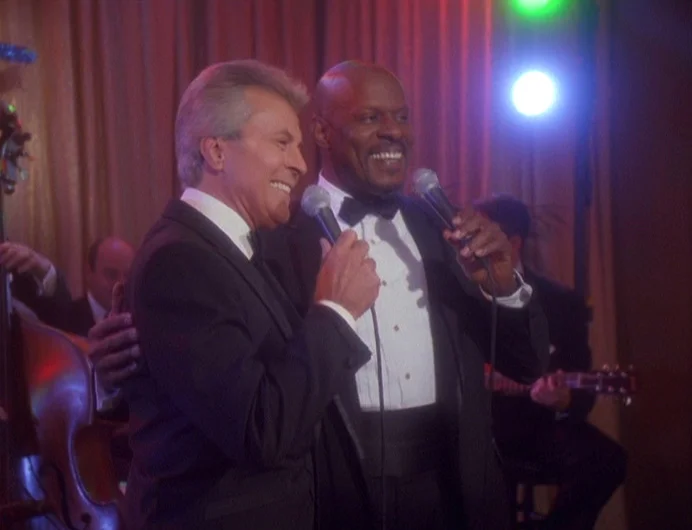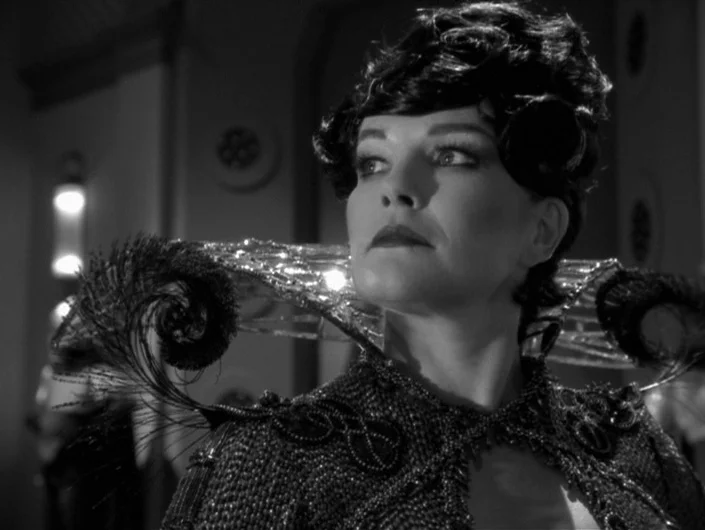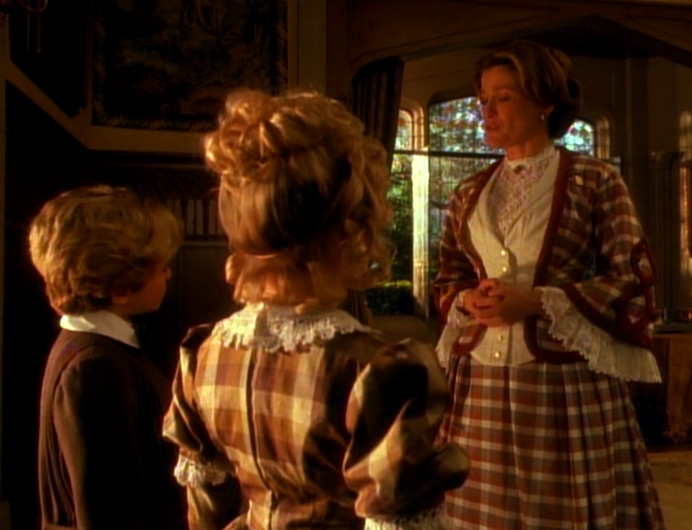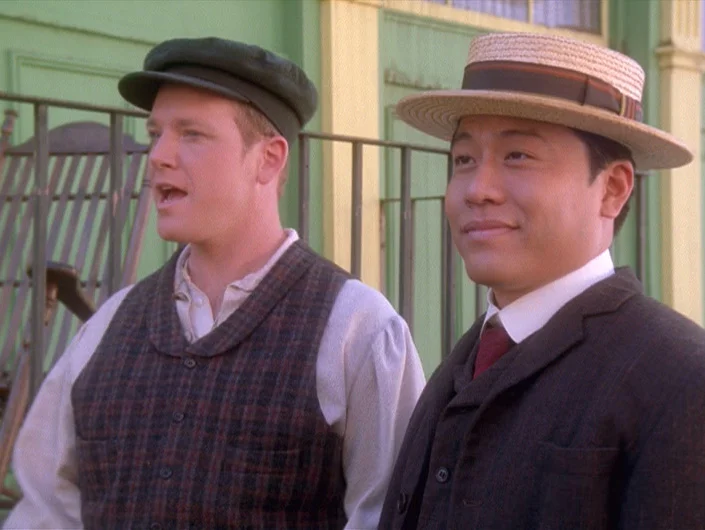by Lorrie Sears
With Microsoft recently developing a basic “holo-desk” program that allows users to manipulate 3-D computer generated objects, a second look has been given to Star Trek holodeck programs and their uses. Whether holodecks were used for training, medical programs, sports and recreation, the re-creation of real-life characters, novels, children’s’ entertainment and learning, or sex, the programs filled a need in starship crews’ lives.
The Good
Looking back at TNG’s pilot “Encounter at Farpoint,” the holodeck was a realistic portrayal of life within in a virtual atmosphere. For instance, when Wesley fell in the stream, he was actually wet. Most holodeck programs were for recreational use, such as Captain Picard’s Dixon Hill holonovel. The program was like stepping into a Humphrey Bogart “Maltese Falcon” atmosphere. These early uses of the holodeck showed its true potential.
This clever tool’s usage continued in the “Sherlock Holmes/Moriarty” program created by Data to learn more about the detective. Data’s mannerisms and likeness to Holmes does not go unrecognized by Moriarty, who challenged Data to a duel of intellects. The fact that Moriarty became aware of his existence as a holodeck character was a clever move by the writers, as he was seen as one the most cunning villains in literature.
Miles O’Brien and Julian Bashir of DS9 employed the holodeck to re-create various war scenarios. Their use of the program “The Battle of Britain” led them to a better understanding of the war and created the bond that became their friendship. They even went so far as to create a model of the Alamo to wage a better skirmish in “The Battle of the Alamo.”
Deep Space Nine ingeniously involved a hologram as a kind of therapist during the Dominion War for several of its characters. Vic Fontaine’s Las Vegas night club served as a getaway from the war that raged around the characters on the space station. Vic functioned as a dating service for Kira and Odo, giving Odo the confidence he needed to finally admit his feelings for Kira. Even more moving, Vic enabled Nog to come to terms with the loss of his leg after “The Siege of AR 558,” serving as the conduit that Nog used to reach out to the reality he gradually accepted.
Vic Fontaine not only provided entertainment for the crew of Deep Space Nine, but he also helped them work through problems in their personal lives.
The Voyager crew most exclusively used the holodeck for distraction and recreation, with the exception of their holographic medical officer. Helmsman Tom Paris authored of most of the programs implemented on the ship. Chez Sandrine’s, a bar program modeled after Tom’s favorite dive in Marseilles, France, operated as a welcome diversion for the travelers far from Earth. A seedy little place, Sandrine’s functioned to just help them relax and unwind and gave the audience a glimpse of the characters in their off-hours during the beginning of the series.
Captain Janeway took on the role of Queen Arachnia when things went awry in Tom Paris’ “Captain Proton” holonovel.“The Adventures of Captain Proton” was a program reminiscent of the 1936 movie “Flash Gordon.” Tom and Harry Kim took on the roles of the protagonists in the novella, fighting to outsmart evil Dr. Chaotica. If not a bit campy, the primary use of this program occurred when photonic life forms engaged in battle with the holographic Dr. Chaotica and company, leaving Janeway to save the day as Queen Arachnia.
The Bad
Reginald Barclay’s use of the holodeck bordered on mania in TNG’s “Hollow Pursuits.” He struggled to fit in on the Enterprise, so he turned to holographic representations of the crew, even going so far as to mock the very officers that gave him the most trouble in reality. His use of Picard, Data, and LaForge as the bumbling “Three Musketeers” and Riker as the tiny musketeer amounted to insubordination. While his problem was understandable, his method of dealing with the issue was troubling. Barclay had obvious psychiatric problems from his past, which had not been resolved. Barclay really never moved beyond his holodeck addiction. He continued to spend time there, even when back on Earth.
“Janeway Lambda One” was the title of Captain Janeway’s gothic holonovel on Voyager. She acted as a children’s governess to an 19th century family. The scenery, costumes, and time period were appealing, but the characters were odd. Some secret exists in the house where the family lived. The story was not well told and the children were ill-behaved. How this could be a relaxing program was also questionable. Janeway spent enough time being every crewmember’s protector, so why would she choose to take care of children in her free time?
The Ugly
Sorry to say, the worst of the worst of holodeck programs came from Voyager. “Neelix’s Resort Program” was used sparingly for parties and relaxation where beaches, water sports, and a bar were available for the crew. It became quickly apparent, however, that this program was meant primarily for showing scantily clad women and men in beachwear. The bar area was more like the lanai in the backyard of the Miami home of “The Golden Girls.” Sadly, this program replaced the use of Chez Sandrine’s, which was far more interesting.
“Fair Haven,” Tom Paris’s re-creation of an 1800s Irish village, came complete with fairy castle. The program itself was a bit corny, and as already explored on TNG, a malfunction made the characters become self-aware in “Spirit Folk.” The Irish villagers, mezmerized by 24th century technology, believed the crew of Voyager were “Spirit Folk” who could whisk people away and do magic. The Irish villagers rebelled, captured Tom and Harry, and thankfully the program was destroyed by an ion storm. The most disturbing aspect of this program, however, was Janeway falling in love with a hologram. She met, was charmed by, and then modified the bartender of the local pub. Apparently, Janeway did not see any harm in changing a person who was only photons and lights, even after serving for six years with a photonic doctor. The line between reality and fantasy was too dimmed in this situation. Maybe if Janeway had just stayed with the bartender as originally written in the program, a relationship between the two could have been more plausible. As it was, most people end up in trouble when they “delete the wife.”
Final Word
The holodeck was a well-loved part of the Star Trek series. When well-used, it added culture, romance, and distraction to the crews of the ships and space stations. When poorly used, it created trouble and grief for those who entered.

